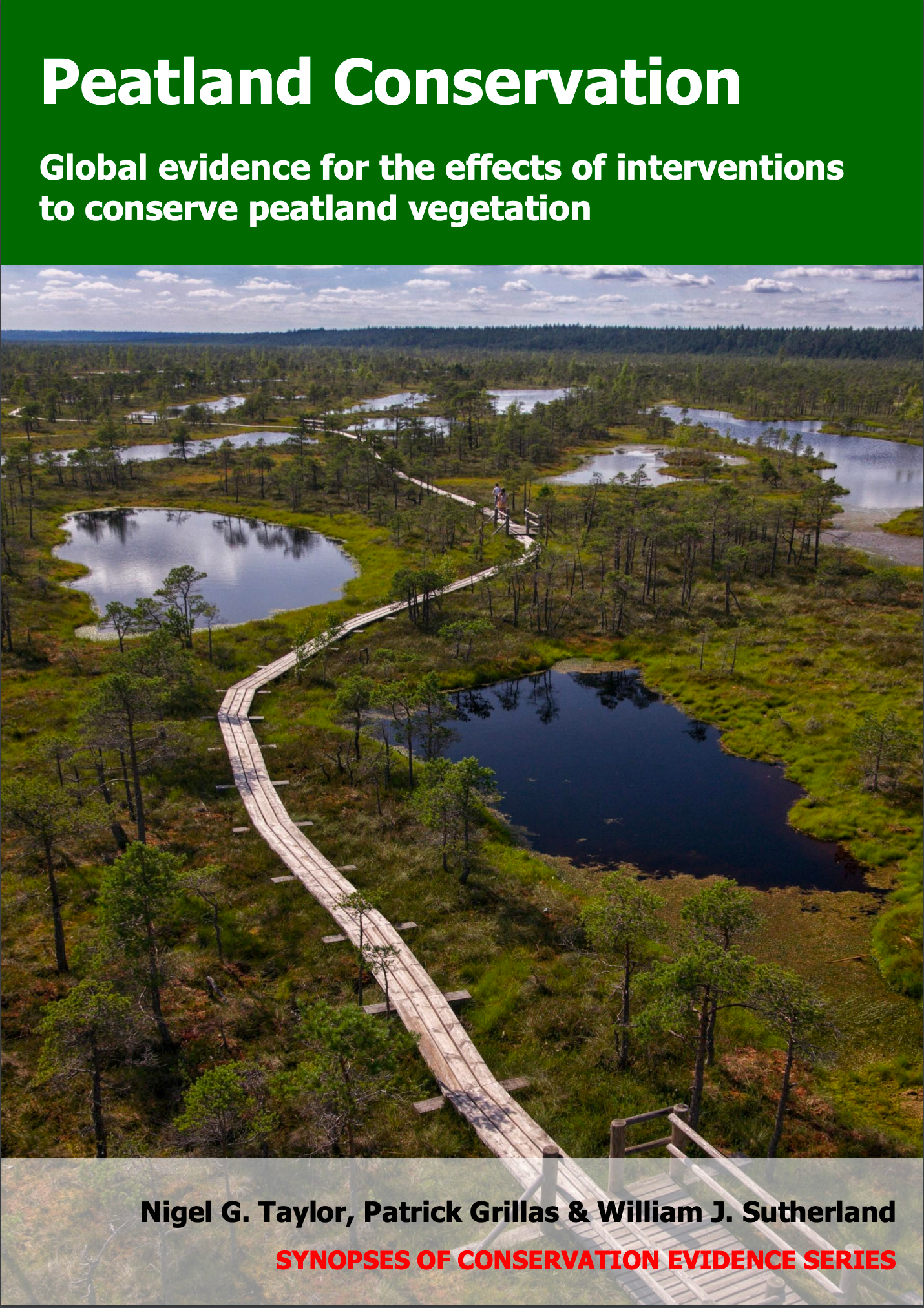Cut/remove/thin forest plantations
-
Overall effectiveness category Likely to be beneficial
-
Number of studies: 4
View assessment score
Hide assessment score
How is the evidence assessed?
-
Effectiveness
60% -
Certainty
50% -
Harms
10%
Study locations
Supporting evidence from individual studies
A replicated, paired, controlled study in two afforested blanket bogs in Scotland, UK (Anderson 2010) reported that plots where trees were felled developed greater cover of sheathed cottongrass Eriophorum vaginatum, and typically less cover of forest mosses, than plots that remained forested. These results were not tested for statistical significance. After five years, felled plots had greater cottongrass cover (16–45%) than forested plots (11–19%). In contrast, felled plots typically had less cover of forest mosses: silk moss Plagiothecum undulatum in four of four comparisons (felled: <1%; forested: 3–6%) and plait moss Hypnum cupressiforme in three of four comparisons (felled: 18–35%; forested: 44–57%). Amongst felled plots, the effect on cottongrass and silk moss was generally larger when debris was left in place rather than removed. Between 1996 and 1998, six blocks of six 40 x 100 m plots were established in drained, conifer-forested bogs. Twelve plots (two plots/block) received each felling treatment: felling and removing debris, felling and leaving debris in place, or no felling. Within each treatment, half of the plots were also rewetted. Five years after intervention, vegetation cover was recorded (details not reported).
Study and other actions testedA replicated before-and-after study in 2002–2005 in two drained, tree-colonized, rich fens in Sweden (Mälson et al. 2010) reported that following tree removal, there were small changes in plant community composition and cover. These results are not based on tests of statistical significance. The overall composition of the plant community changed over three years following tree removal (data reported as a graphical analysis). Cover was reported for the most abundant plant species. For example, in one fen, Sphagnum moss cover was 43% before tree removal but 28% three years after. Cover of common cottongrass Eriophorum angustifolium was <1% before but 5% after. Across both fens, cover remained relatively stable for purple moor grass Molinia caerulea (before: 55%; after: 50%), common reed Phragmites australis (4% before and after) and sedges Carex spp. (0–1% before and after). In late 2002, all trees were cut and removed from two drained 50 x 150 m plots (one plot/fen). Vegetation cover was estimated before (2002) and after (2005) tree removal in 4–16 quadrats (each 0.25 m2) in the centre of each plot. This study was based on the same experimental set-up as (3) and (4).
Study and other actions testedA replicated, paired, controlled, before-and-after study in 2002–2010 in three tree-colonized rich fens in Sweden (Hedberg et al. 2012) found that following tree removal, there were increases in plant species richness and bryophyte, grass and sedge cover, but not cover of fen-characteristic plants. In cleared plots, plant species richness increased from 9 plant species/0.25 m2 before tree removal to 11 species/0.25 m2 eight years after, although it peaked at 12 species/0.25 m2 after three years. Cover increased of Sphagnum mosses (from 10% before tree removal to 15% eight years after), wetland-characteristic bryophytes (from 27 to 37%), grasses (from 2 to 4%) and sedges (from 1 to 3%). There was no significant change in cover of fen-characteristic mosses or vascular plants (data not reported). In plots that remained forested, there was no change in species richness or vegetation cover. In winter 2002/2003, in each of three forested fens, trees were removed from one 50 x 300 m plot whilst an adjacent plot was left forested. Half of each plot remained drained whilst half was rewetted. Between 2002 (before intervention) and 2010, cover of every plant species was estimated at 40 points/plot, in 0.25 m2 quadrats. This study was based on the same experimental set-up as (2) and (4).
Study and other actions testedA replicated, paired, controlled, site comparison study in 2002–2010 involving three tree-colonized rich fens in Sweden (Hedberg et al. 2013) reported that tree removal increased plant species richness, especially in drained plots, but found that it had no effect on the height of new vegetation. Amongst plots that remained drained, those that were clear-cut had higher plant species richness after eight years than those that remained forested (clear-cut: 13; forested: 9 species/0.25 m2). Amongst rewetted plots, tree removal had a much smaller effect (clear-cut: 13; forested: 14 species/0.25 m2). These results were not tested for statistical significance. Tree removal had no significant effect on canopy height (of new vegetation) in drained plots (clear-cut: 6 m; forested: 6 m) or rewetted plots (clear-cut: 5 m; forested: 5 m). For comparison, a nearby natural (undrained and unforested) fen contained 9 plant species/0.25 m2 and had a canopy height of 1 m. These were significantly greater in the clear-cut plots. Around winter 2002/2003, trees were removed from one 50 x 300 m plot in each tree-colonized fen. An adjacent plot was left forested. Half of each plot was also rewetted whilst half remained drained. In 2010, plant species and canopy height were recorded at 40 points/plot, in 0.25 m2 quadrats. The natural fen was sampled in 1978. This study was based on the same experimental set-up as (2) and (3).
Study and other actions tested
Where has this evidence come from?
List of journals searched by synopsis
All the journals searched for all synopses
This Action forms part of the Action Synopsis:
Peatland Conservation
Peatland Conservation - Published 2018
Peatland Conservation





)_2023.JPG)














